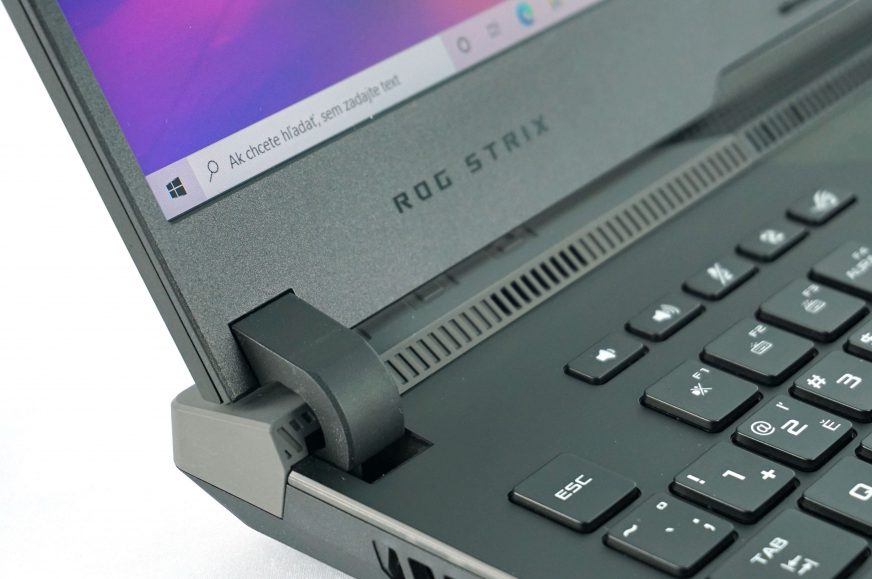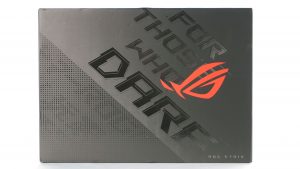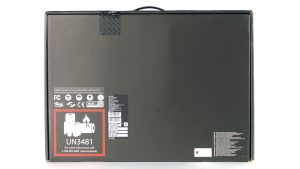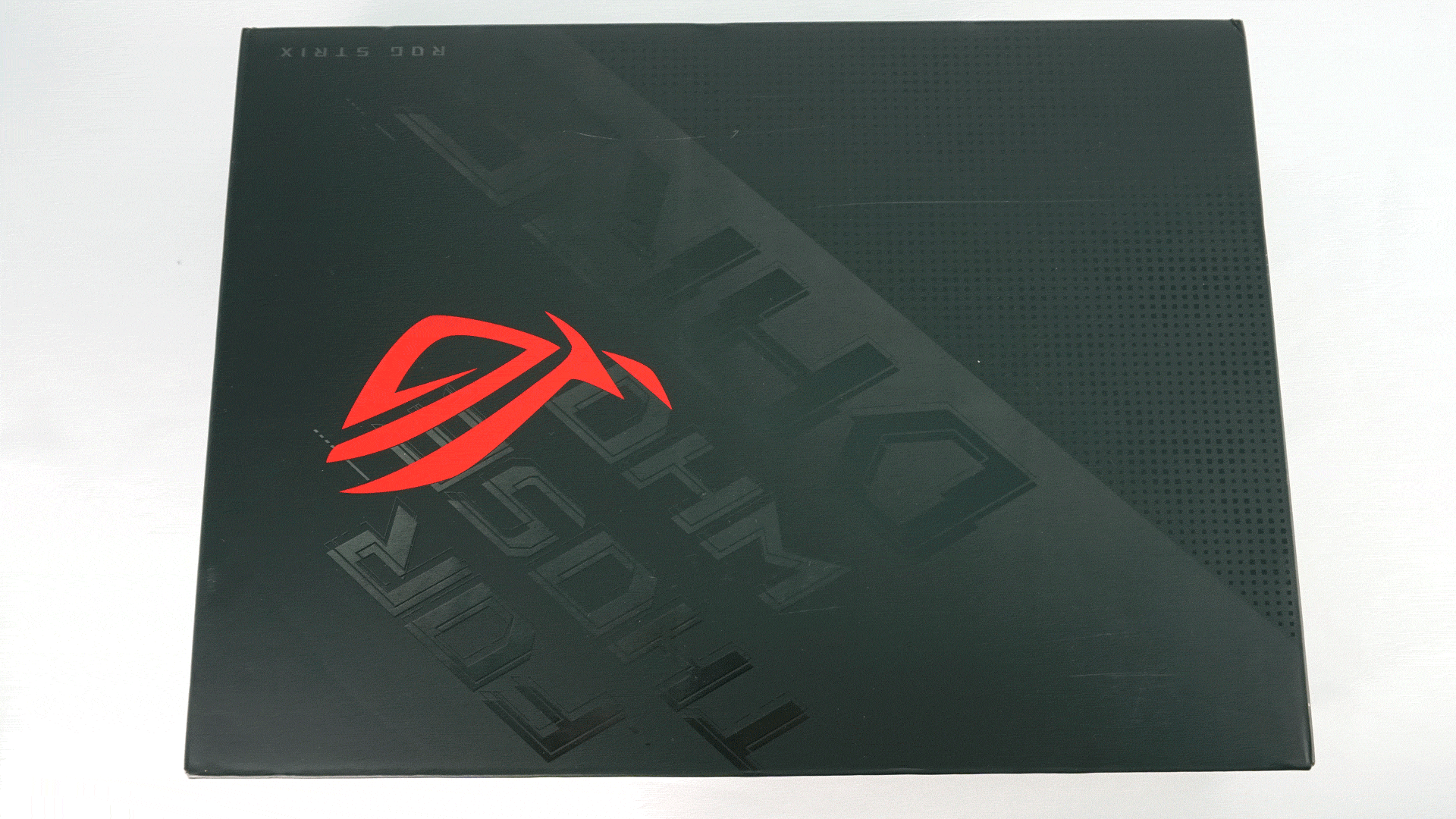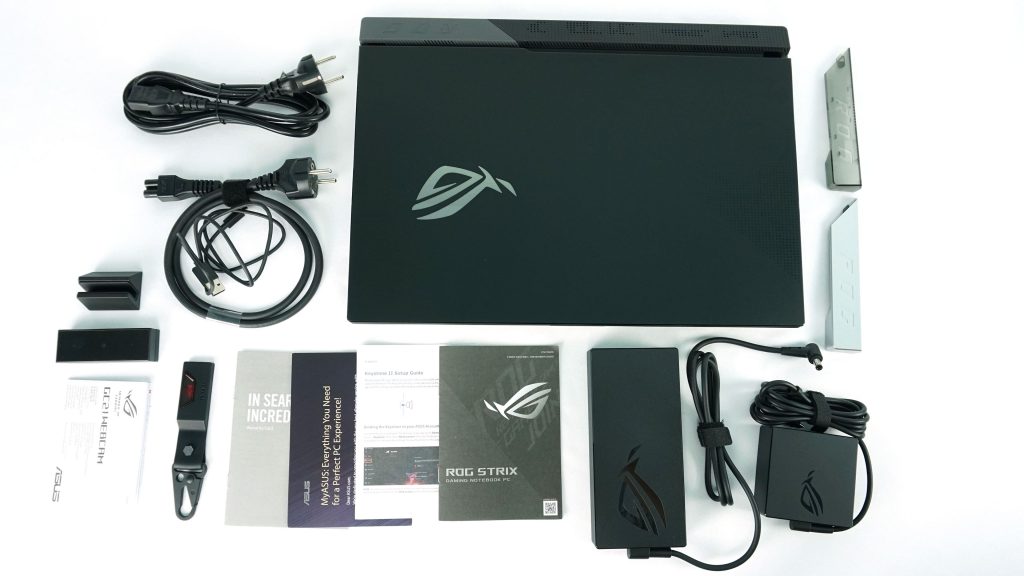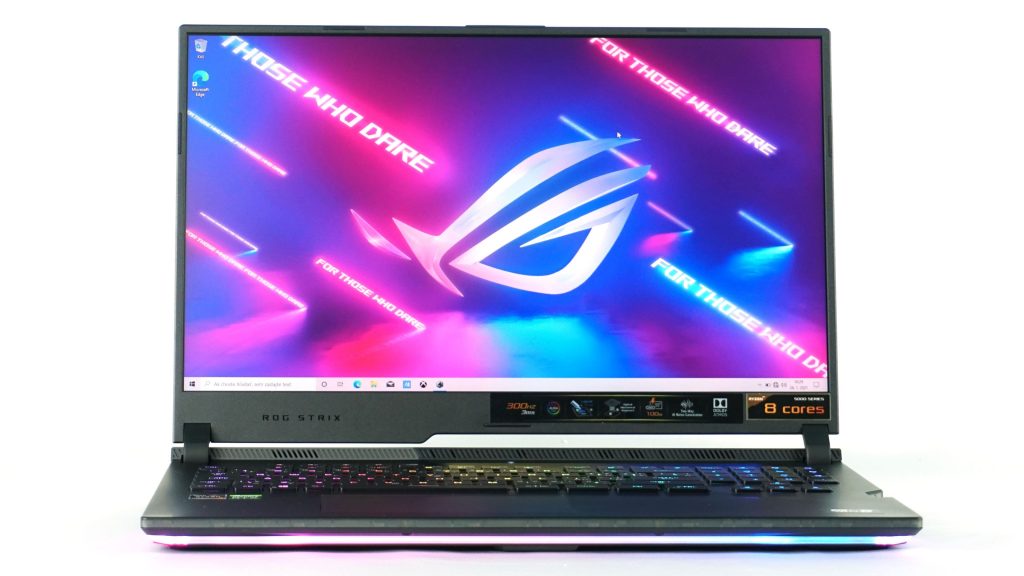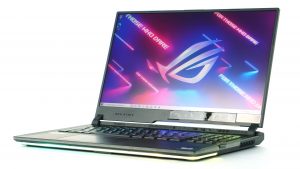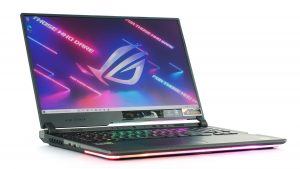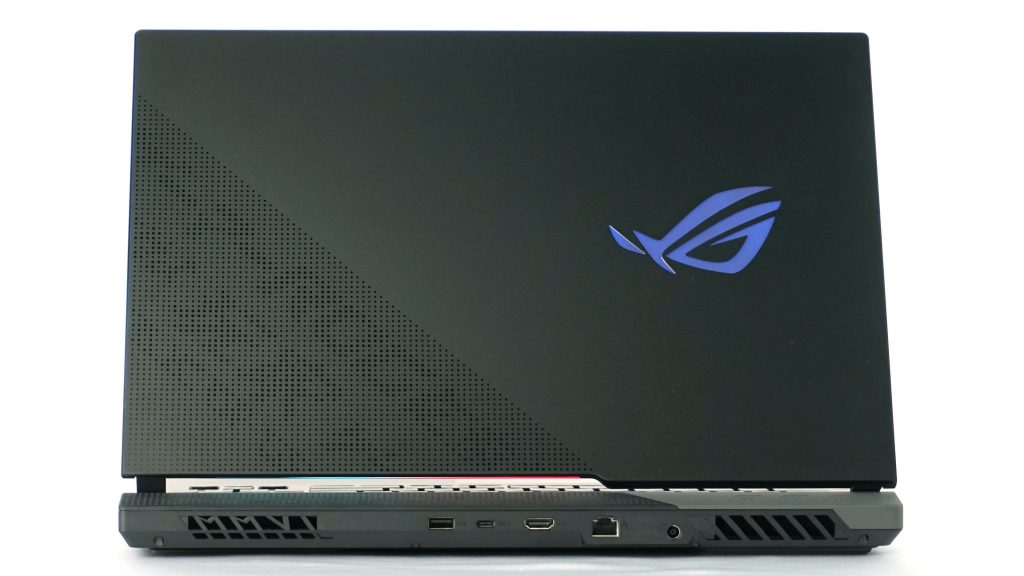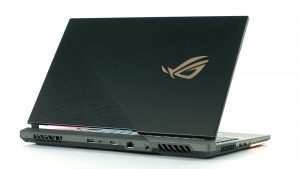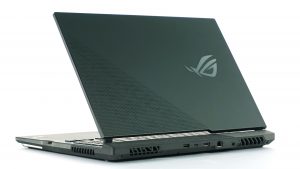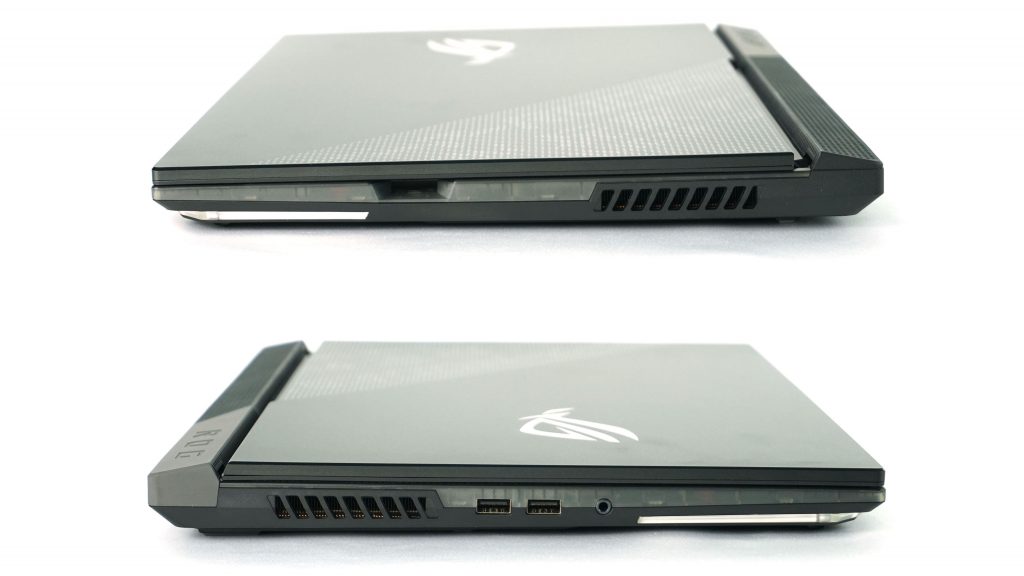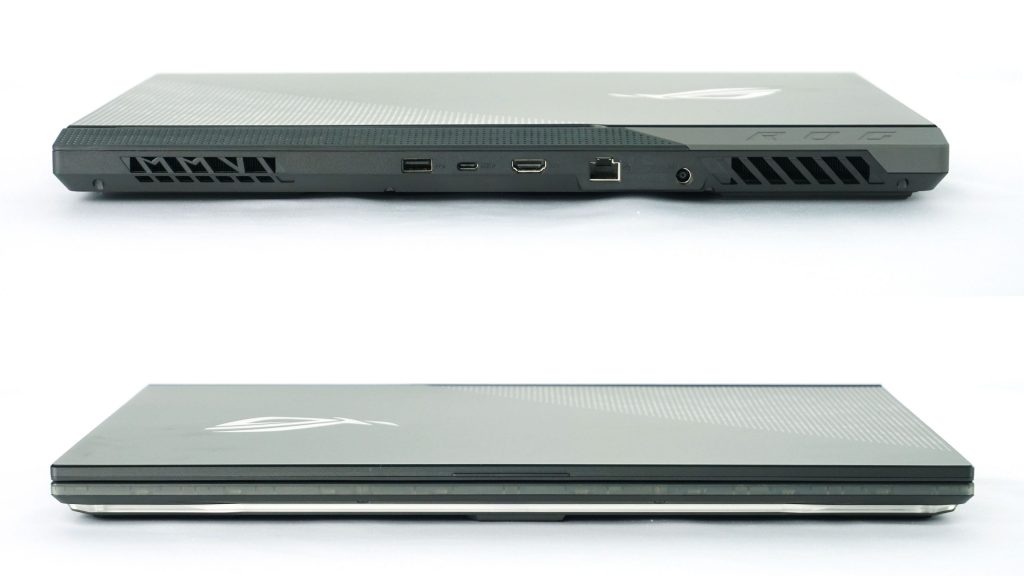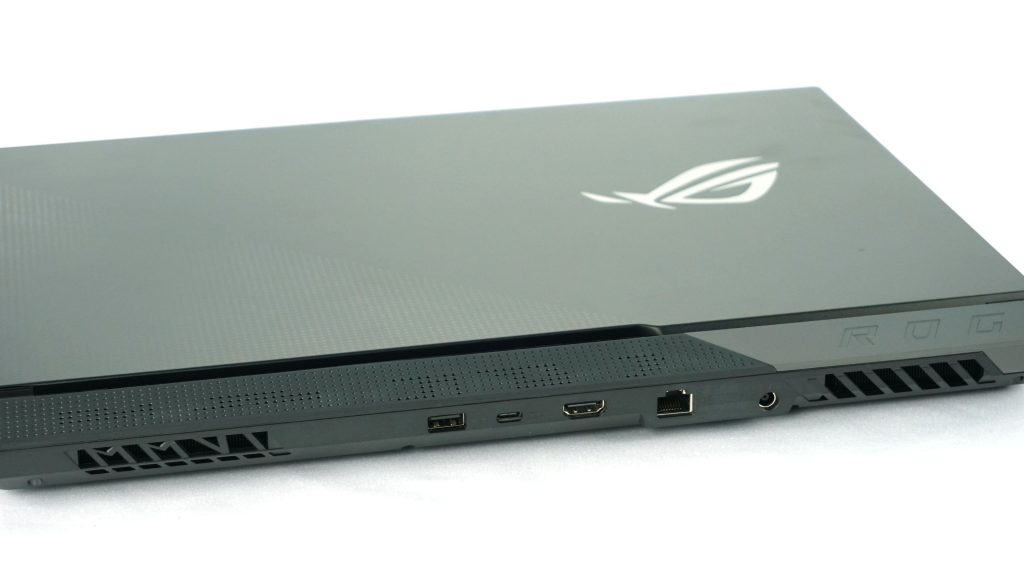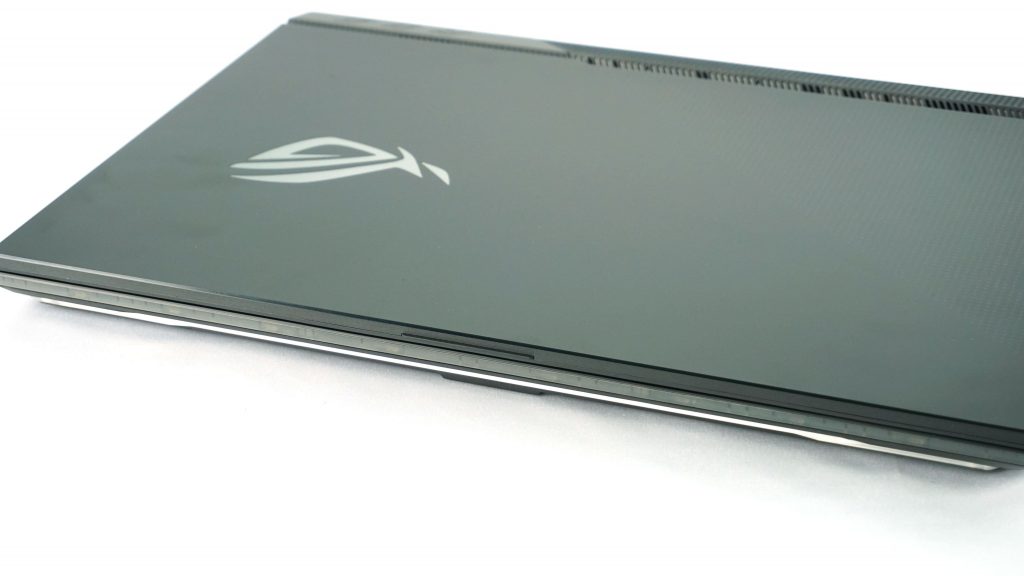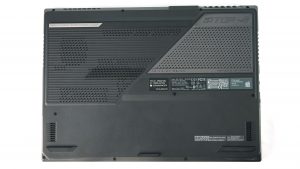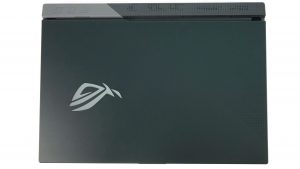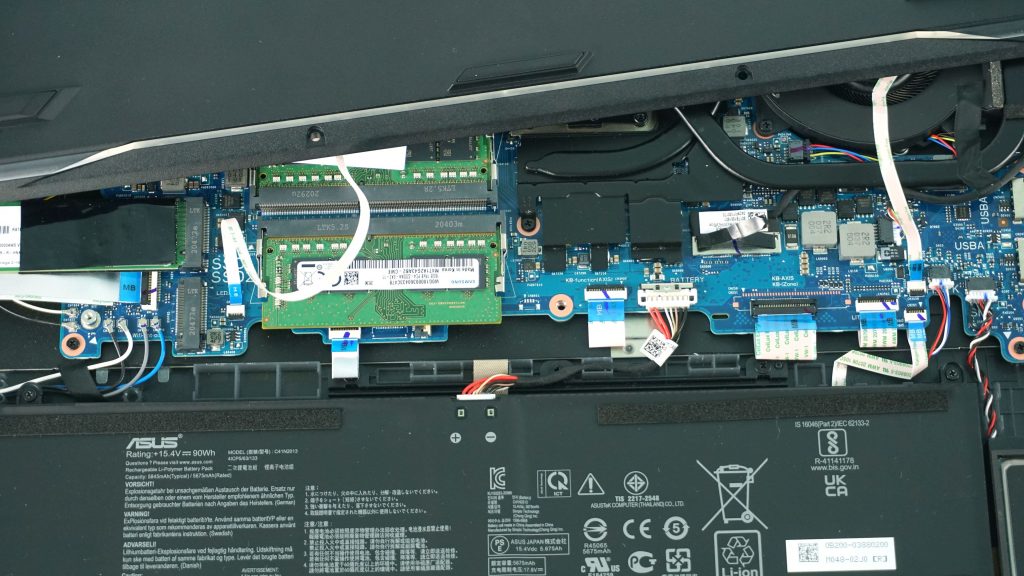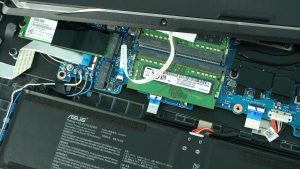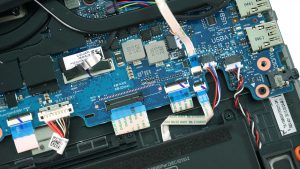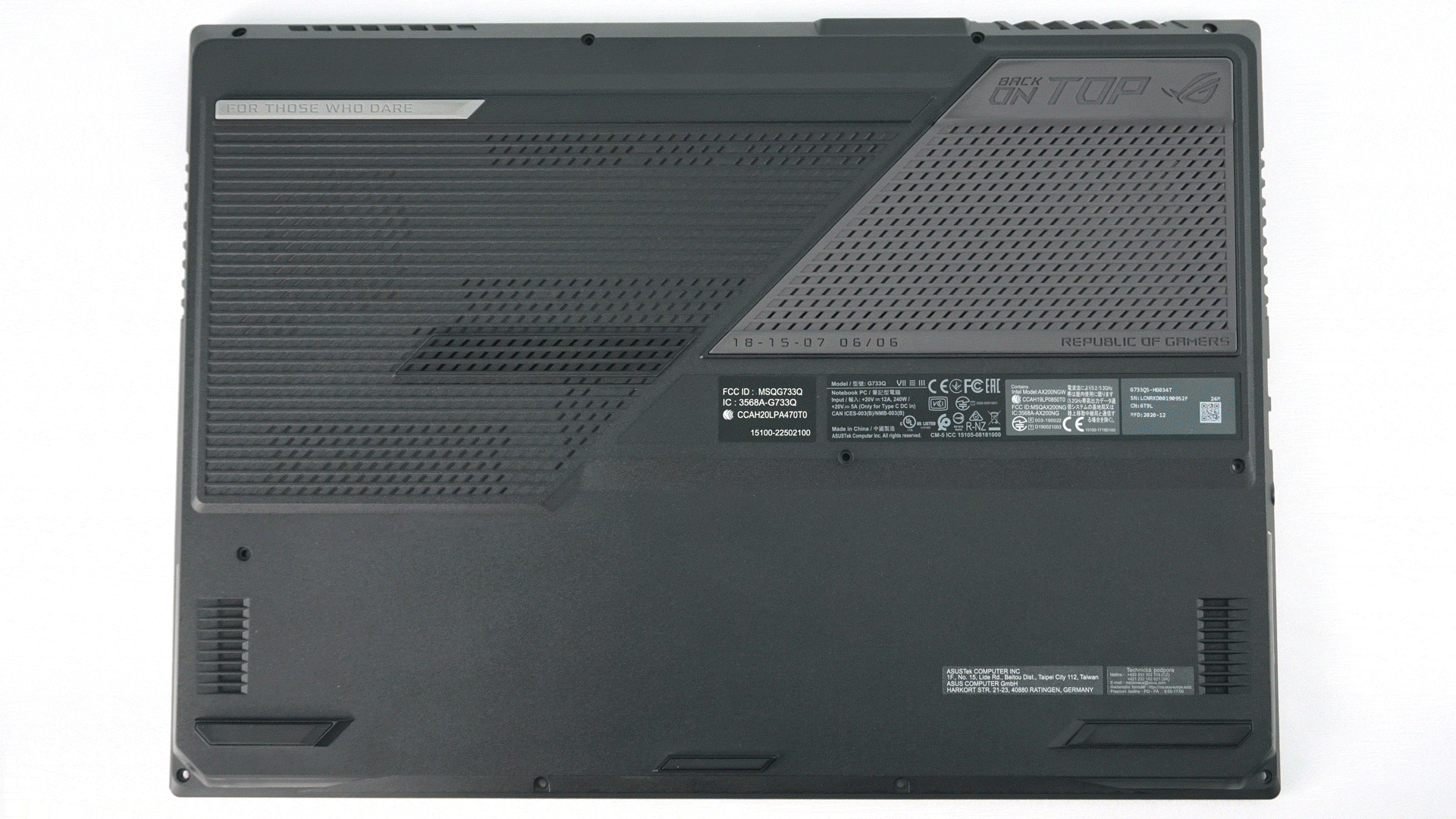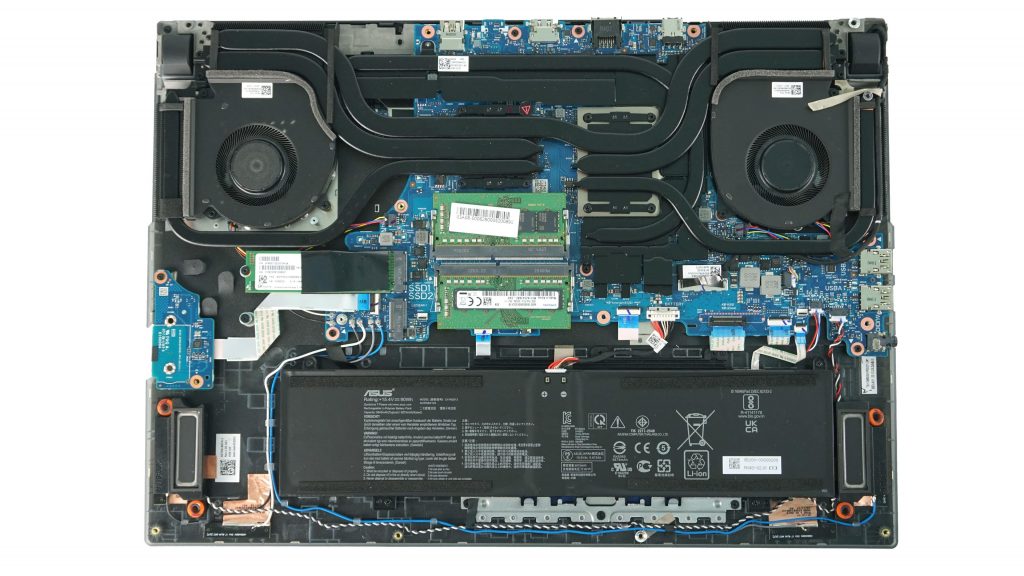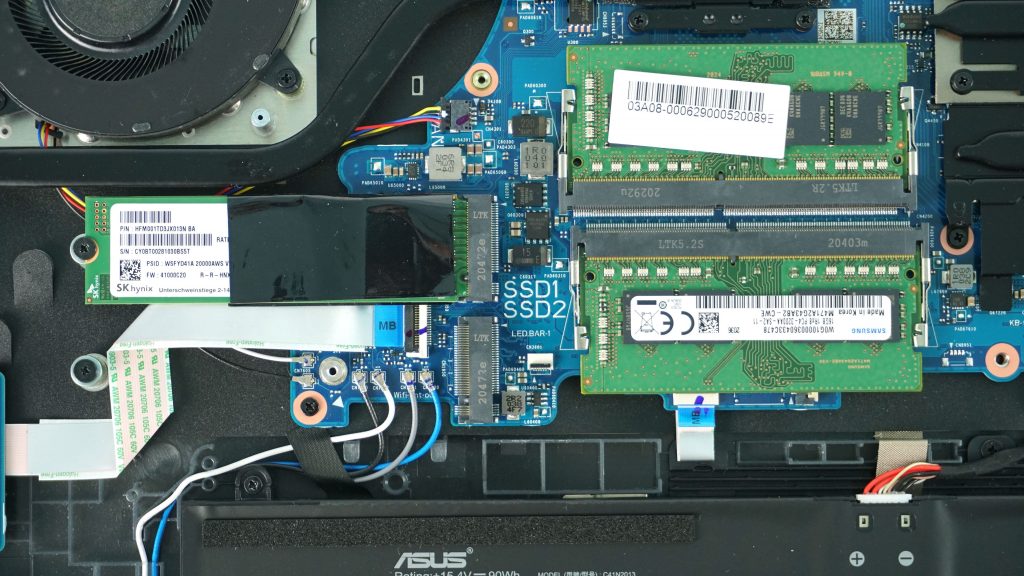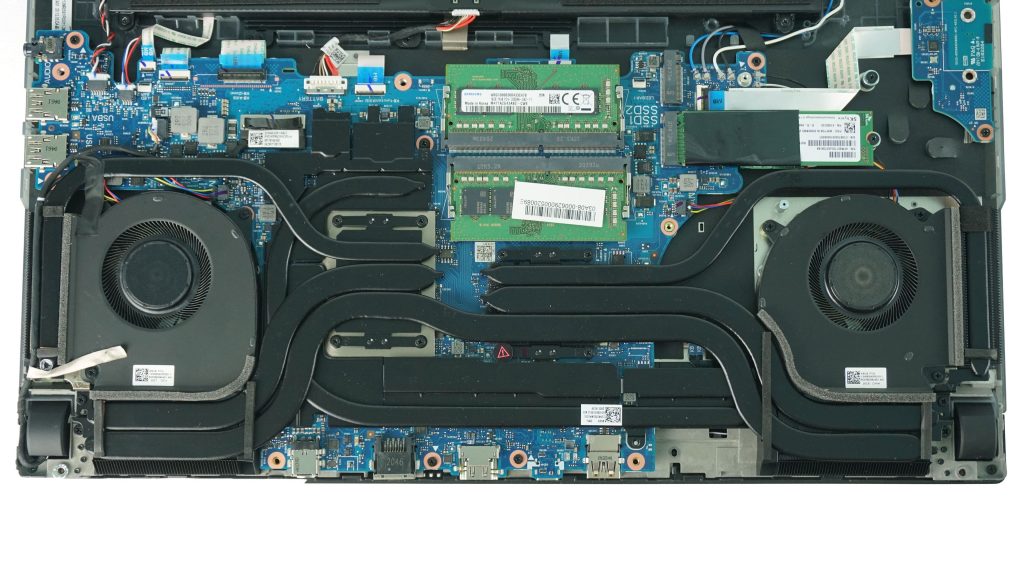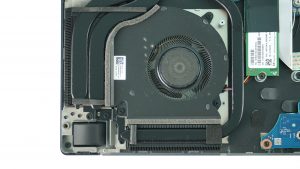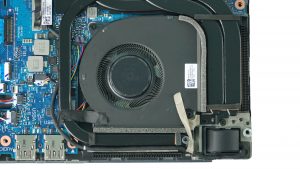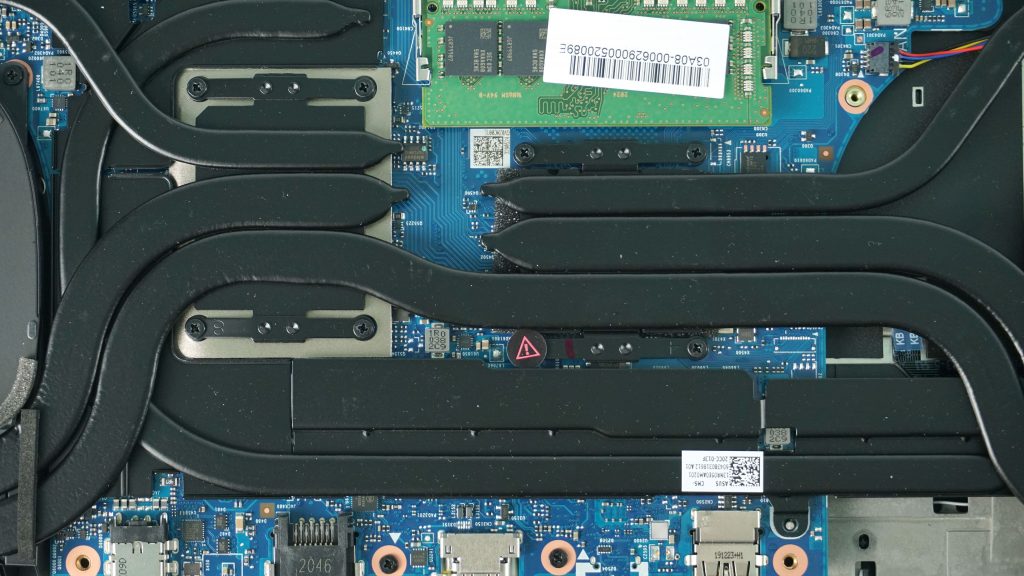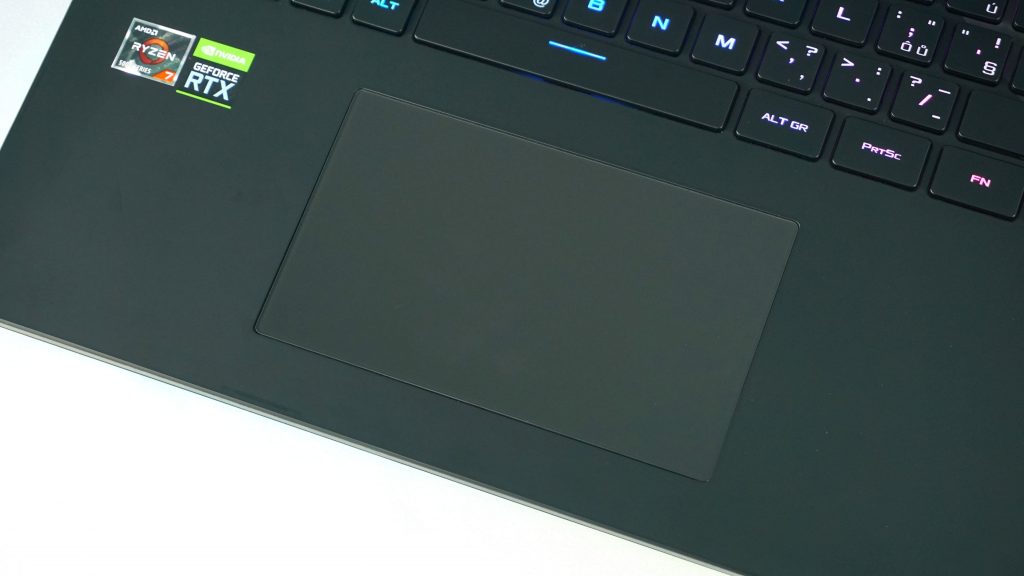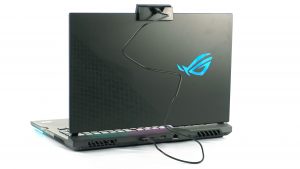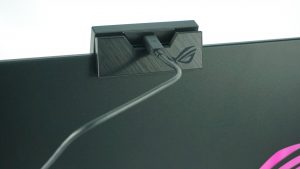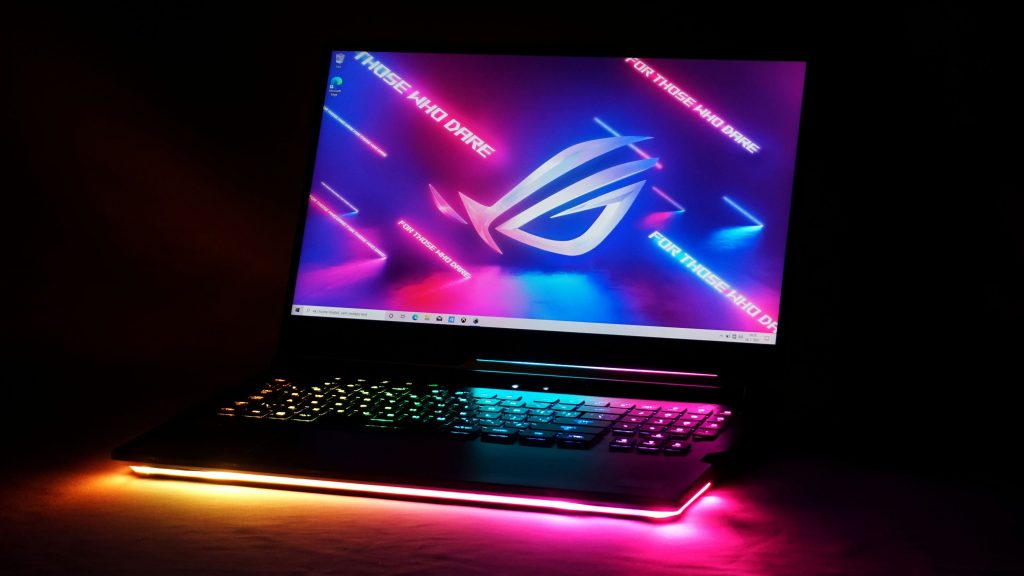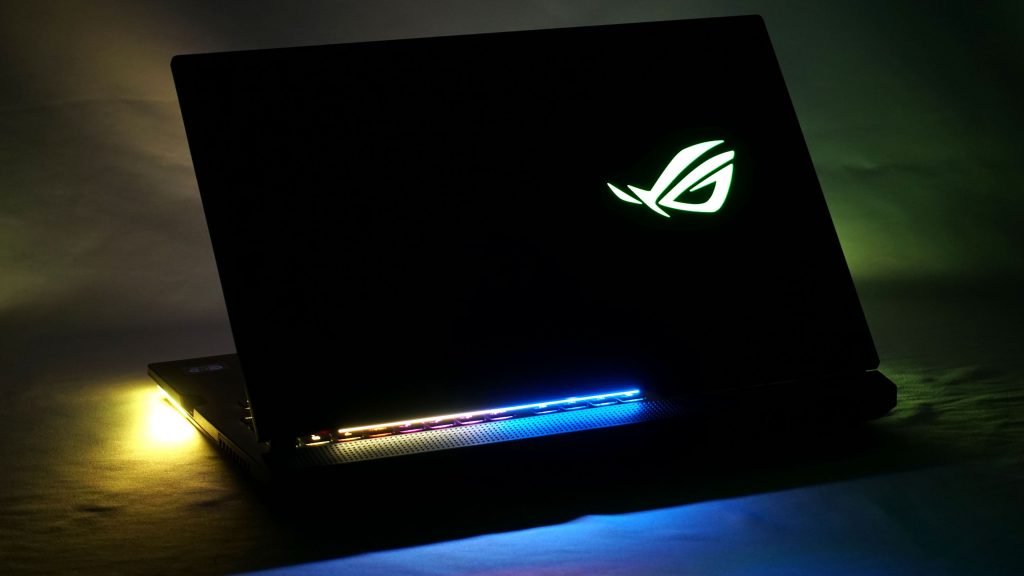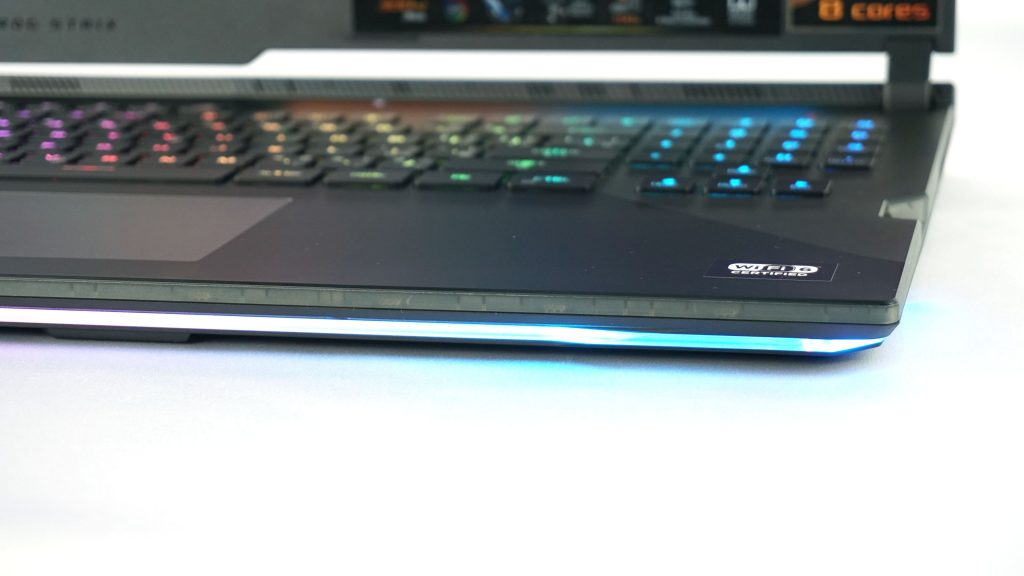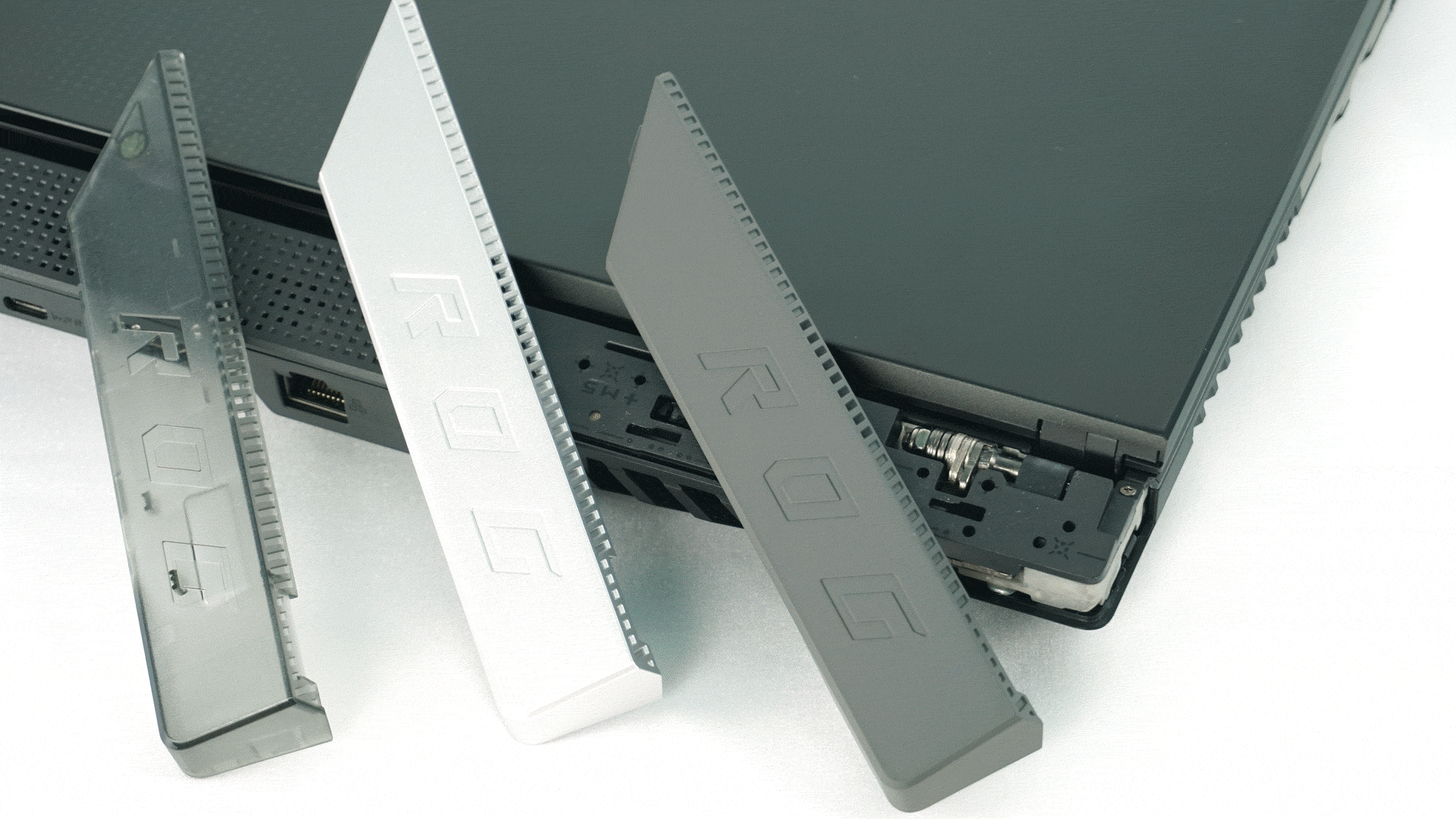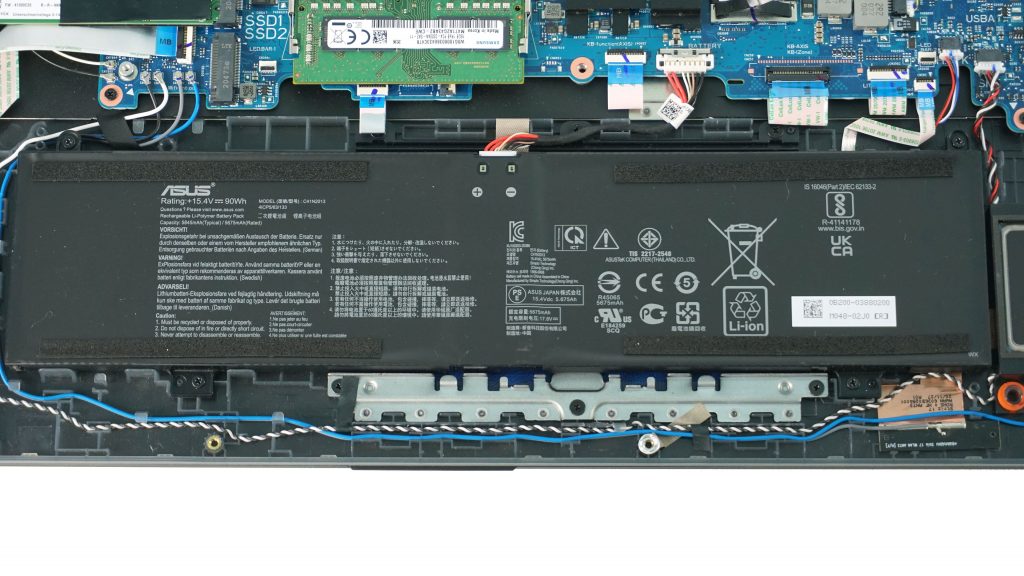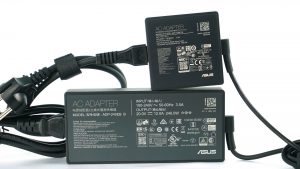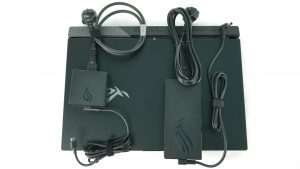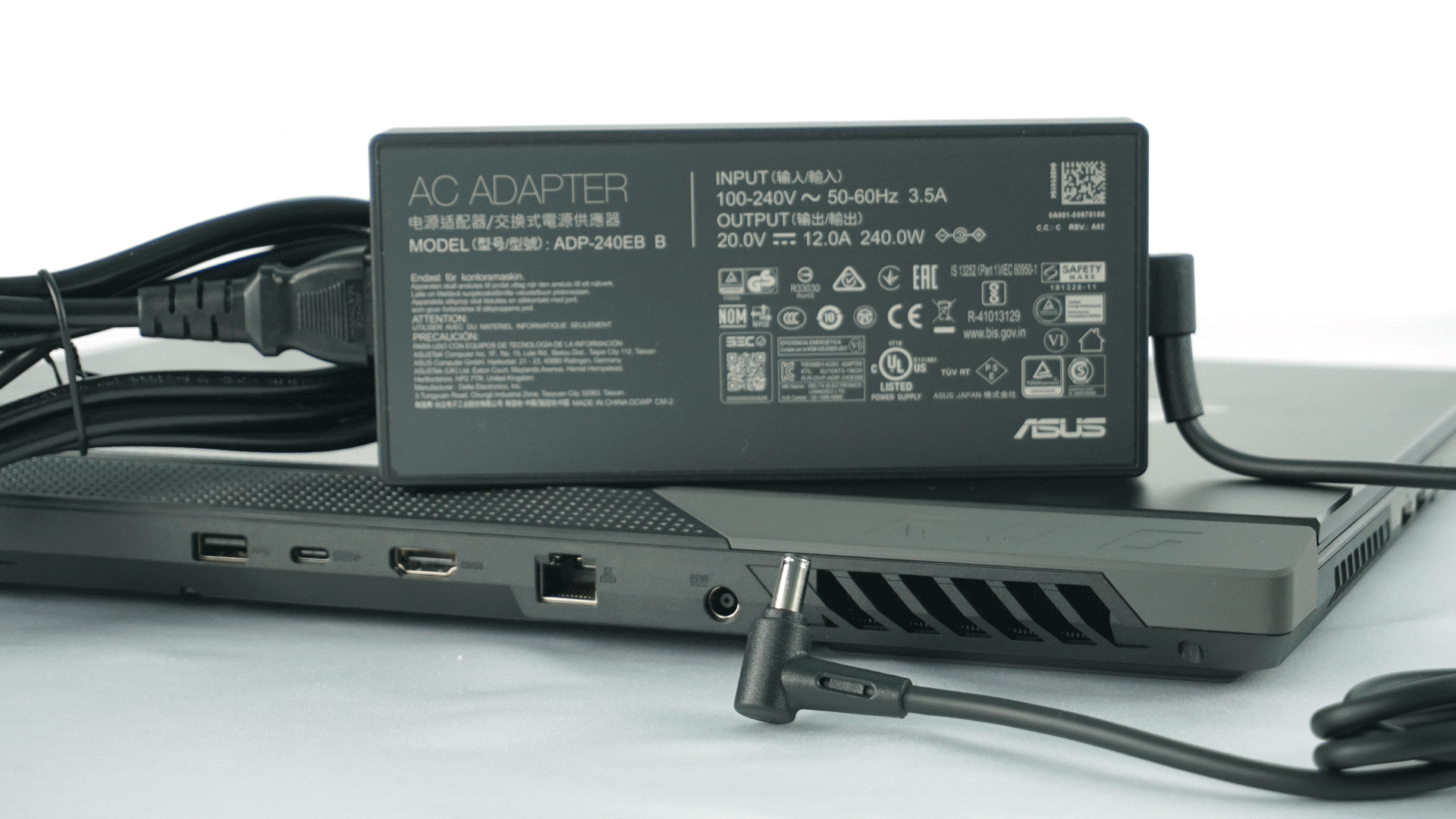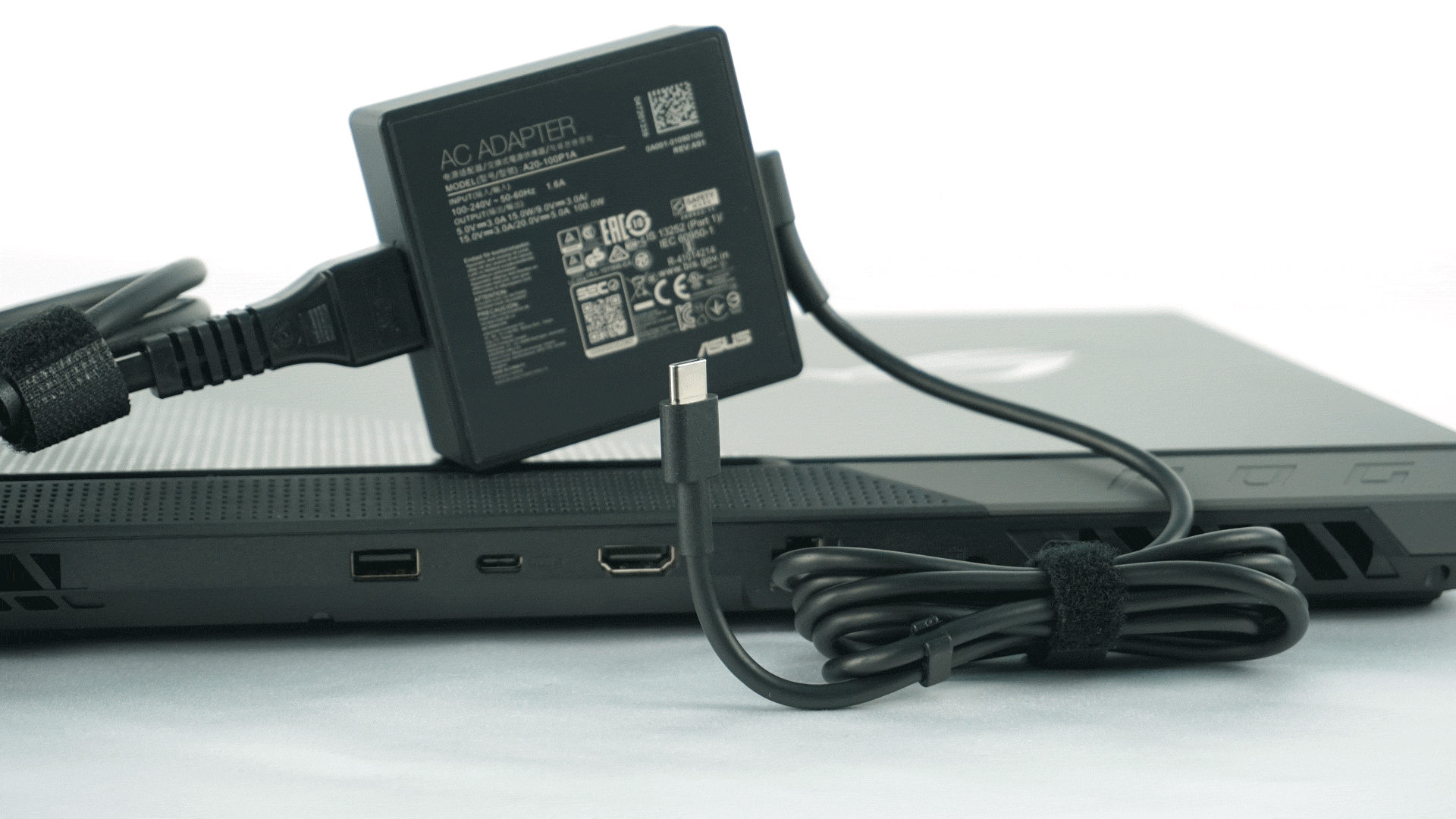Specs and details
Asus has taken a very bold and quite surprising step this year with its gaming laptop portfolio. It switched extensively to Ryzen 5000 processors and combined them with the new GeForce RTX 3000 mobile graphics cards. The new ROG Strix SCAR 17 is thus the first look at a new stage of mobile gaming, in the highest configuration with 8-core processor and a 16-gigabyte RTX 3080.
Basic specs
| Parameters | Asus ROG Strix SCAR 17 G733QS-HG034T | |
| Dimensions | 395 × 282 × 23,4–27,5 mm | |
| Weight | 2720 g | |
| Display | 17,3", 16:9 Full HD 1920 × 1080 px, IPS, 300 Hz, 300 nit, 3 ms, 100 % sRGB, matte | |
| Procesor | AMD Ryzen 7 5800H, 8C/16T, 45 W, 7nm | |
| Graphics card | Nvidia GeForce GTX 3080 16 GB GDDR6 (115 W) / AMD Radeon Vega 7, intergrated | |
| Memory | 32 GB DDR4 SODIMM (3200 MHz), replacable, up to 64 GB | |
| Storage | 1× 1 TB SSD M.2 PCIe NVMe, 1× free M.2 slot | |
| Ports | 1× USB-C 3.2 Gen 2 10 Gb/s (DisplayPort 1.4, 100 W Power Delivery), 3× USB 3.2 Gen 1 5 Gb/s typ A, 1× HDMI 2.0b, 1× RJ-45 Ethernet, 1× 3,5mm jack | |
| Battery size | 90 Wh | |
| Camera resolution | no, external included | |
| Speakers | 2× 2 W + 2× 4 W quad-speakers | |
| Approximate price | 82 990 Kč/3129 € |
Details
The packaging of ROG products is always characterized by interesting visuals, so this time you can also see the gaming motto and a similar theme on the front of the box as on the display lid.
The content of the package is above standard rich, but again it is a tradition with gaming Asus products. In addition to the laptop, you will find two chargers, documentation, replaceable covers, a keychain with Keystone and a camera.
ROG Strix SCAR 17 represents a kind of middle class of Asus gaming notebooks, where the top models bear the Zephyrus designation. Nevertheless, SCAR offers top equipment in the field of components. The review unit thus has an 8-core Ryzen 7 5800H, 32 GB RAM, 1 TB SSD and RTX 3080 in a 16 GB version with 115 W TDP. Interestingly, the previous model had a 150 W RTX 2080 Super, so it will be interesting to see where the new graphics card with lower TDP will be placed. Other configurations offer the stronger Ryzen 9 5900XH and the weaker RTX 3070 8 GB. You have a choice of several configurations according to your preferences.
The design style of the new SCAR is similar to the previous one. You can also see the same notch on the display lid in the lower part and the RGB backlight in the front part of the base, but this time it is even more intensive. RGB has also been added to the cut-out on the right side of the display. The front side is therefore identical, except for a few details, we will see other changes in the keyboard, but more on that later. The build quality is excellent, the laptop is like a tank and in case of emergency it would also serve well as a weapon. 🙂
On the back you can see the backlit logo as well as on the predecessor, the novelty has a dotted triangle with ROG inscriptions, as you know from motherboards and other ROG products. It is only a visual effect, the balls and the font are not engraved into the lid. The weight of 2720 grams is one of the higher ones, which is understandable due to the larger dimensions and 17-inch screen. It should be noted, however, that the SCAR is heavier than the two-display Zephyrus Duo, and that’s should say enough.
The port selection is solid, although at first glance both sides may seem the opposite. The right side has only an opening for Keystone and nothing more. On the left there are at least two 5 Gb USB-A connectors and an audio jack. The absence of ports on the right side makes sense when using a mouse, when the accessories connected on the right side would be an obstacle.
You will find additional ports on the back, where there is a pair of USB ports, one of which is again 5 Gb type A and the other is 10 Gb type C with DisplayPort 1.4 and charging. There is also HDMI 2.0b, Ethernet and power connector. Due to the use of the AMD processor, Thunderbolt is missing here, which I would otherwise expect in this price category. However, if my memory serves me right, even the predecessor with Intel did not have TB3, so it’s not even a step back.
At the rear, you can only see the massive holes of the cooling system and the hinges of the display offset towards the front.
The display cover offers a protrusion for easier opening. You can easily open the lid with one finger.
The top view will again show you the black lid with a gray two-tone port section. But the lower part is more interesting, where you can see a combination of several colors and materials. The gray part is surprisingly rubber and the black protrusions are also rubber. The notebook thus holds towards the table like glued. I commend the use of Phillips screws, which facilitate access to components.
What to watch out for when opening the lid is a pair of cables leading from the RGB LED in the corners of the bottom cover to the motherboard. Be careful not to tear them, otherwise you will lose the colorful show that the laptop offers. In the picture below you can see how the cables are run from both corners.
After removing the bottom cover, you get to the components. Although access to the inside of the notebook is a bit difficult, it is still a better solution than the first Zephyrus, where you had to disassemble the keyboard to access the components.
The review configuration represents a higher model range, but it is not the very top model. The biggest attractions are the innovations in the form of CPU and GPU, namely the 8-core Ryzen 7 5800H with a base clock of 3.2 GHz and a maximum boost of 4.4 GHz. There should also be a configuration with the more powerful Ryzen 9 5900HX with a clock speed of up to 4.6 GHz, but we will have to look at the differences between these processors in practice sometime later. In the case of graphics card, it is a top model for a change, i.e. the GeForce RTX 3080 in a mobile version with up to 16 GB VRAM and TDP set to 115 W. It is the TDP that will be a very important information in the new generation of notebooks, as it may happen that the 3070 with a higher TDP beats the 3080 with a base value of 80 W. Therefore, in each test we will also present the TDP of GPUs. Also interesting is up to 16 GB of VRAM, which with the RTX 3080 is one of the two configurations with which laptops will be offered. The second one is 8 GB and it will therefore be interesting to see which versions of this GPU will appear on which laptops. Back to SCAR. In addition to the RTX 3080, you can also have the 3070 with 8 GB of VRAM. Next, the tested piece offers 32 GB 3200 MHz RAM and 1 TB PCIe NVMe SSD. Both of these components can be improved on their own. The RAM can be expanded up to 64 GB and the storage can be expanded thanks to a secondary free M.2 slot. Under the first M.2 slot, you will also find a WiFi card that already supports WiFi 6 802.11 ax, so you will not need to change it in the near future.
An interesting fact is that 5 VRM power phases are dedicated to the CPU and the GPU has up to 7. In addition, the cooling, which the manufacturer definitely did not underestimate, deserves attention too. Once again, we encounter the use of liquid metal from Thermal Grizzly, which significantly reduces CPU temperatures by up to 16 degrees Celsius.
Arc Flow fans have also been improved, now with 84 blades and reportedly increasing the airflow by 35% on the CPU and 21% on the GPU, while having 3 dBA less noise than the previous version. A unique detail is the variable width of the blades, which are only 0.1 mm thick at the base and gradually widen towards the edge. Thanks to that, they can blow more air. The fan ends, in turn, prevent air turbulence and direct the air in a regular pattern, making the cooling a little quieter again. Other technologies that the fans support are Self-Cleaning Cooling 2.0, thanks to which dust will not be stored inside the fan, and 0 dB Technology, which you know mainly from graphics cards, i.e. turning off the fans when temperatures are normal. The notebook can thus be completely silent, which was a utopia with gaming notebooks until recently.
Heatsinks, which have thinner 0.1 mm fins and can dissipate up to 13% more heat, have also undergone changes. The fact that there are up to four in the laptop, i.e. on both sides and two in the back, certainly helps. We will also find 6 copper heatpipes here. The manufacturer did not save on cooling, so it will be interesting to see what results we achieve in tests and performance curves.
Opening the lid is only possible up to about 150 degrees, it’s a pity that the hinges do not open up to a straight angle, i.e. in full plane with the base, which is my favorite feature, which is not quite common with gaming laptops.
Before I go to the keyboard, I have to mention the base. Here you can see an interesting design change in the form of a transparent right part, which definitely attracts attention. On the contrary, the rest of the base is black and it is a pleasant soft-touch material. What did not please me, however, is that it gets very dirty and it is a complete fingerprint magnet. So I don’t know if that was the best choice.
I consider the keyboard to be one of the most interesting parts of the laptop. It is an optical-mechanical keyboard that has a satisfactory click and at the same time offers a lightning reaction time of only 0.2 ms (at least according to the words of the manufacturer). Conventional mechanical keyboards have 5 ms. The length of the key is 1.9 mm and the click at the end is really great. This is exactly how I imagine a keyboard in a gaming laptop. It’s probably the best keyboard I’ve tried, and even better than the Legions offer in that regard. However, there is one area where I have some reservations and that is the layout. I commend the dedicated function buttons at the top as well as the control of all aspects of the backlight, whether the display or RGB, as well as switching of power modes. Big arrow keys are also good. What I didn’t like was moving the numeric part up one row, which you have to get used to, and during my short testing it caused me to always press a number one row lower. And as you already know me, I would like a two-line (ISO) enter. 🙂
The touchpad is less used in gaming notebooks than in ultrabooks or business models, but it is still an important part of the user experience. In this area, the SCAR 17 pleasantly surprised with the transition from physical plastic buttons to a fully glass touchpad with integrated right and left buttons, but also with an area up to 85% larger than its predecessor. I definitely praise these changes. I have no reservations about responsiveness and tracking.
Like the Zephyrus Duo, the new SCAR does not offer a front camera, which is not ideal in today’s pandemic situation and home office trend. Fortunately, following the example of the Duo, SCAR also offers an external GC21 camera in the package.
However, you have to connect it via USB, ideally in the back. The quality is significantly better than any other laptop built-in camera, so I commend this aspect. The problem is probably just the portability and the need to assemble and disassemble the camera whenever you need to move your laptop somewhere.
What disappointed me a little is that you won’t find any biometric security on this laptop. At least I would welcome a G14-style fingerprint reader.
An integral part of the SCAR 17 is the RGB backlight, which is located basically everywhere.
At the back, the logo and strip in the cutout of the display lid are lit, on the front it’s the keyboard and a large strip in the front of the base, which we have already mentioned when looking at the components.
Another interesting design aspect is the interchangeable covers called Armoury Cap. There are three versions in the package, and the goal is for you to be able to print your own on a 3D printer and adapt the notebook to your own liking.
The speakers consist of a pair of 2 W and a pair of 4 W modules. After a long time, it is a relatively good-sounding gaming notebook, which definitely stands out in this aspect. The speakers also support Dolby Atmos and you can customize them through the corresponding application.
The notebook is equipped with a 90 Wh battery, which is a fairly large jump from 66 Wh in the previous model. Nevertheless, I would expect the maximum of 99 Wh, which is allowed by the aviation authorities, and in practice this is the greatest value you will see in laptops. We already had smaller laptops with this capacity, and the SCAR 17 is definitely not a small laptop where the few more Whs wouldn’t fit. Nevertheless, I praise the significant increase compared to its predecessor.
The laptop comes with a 240 W charger, which is slightly smaller than the 280 W version of the predecessor. Thanks to fast charging, you are at 50% after half an hour, an hour is enough to reach 86% and a full charge takes about an hour and a half. However, it is still an impractical solution for travelling, so you will also find a 100 W USB-C adapter with Power delivery in the package, which you can also use to charge your laptop. You will definitely appreciate the more compact dimensions and lower weight in cases where you do not need to use the full power of the processor and graphics card. In practice, you can have a 240 W adapter at home for playing games and carry the smaller 100 W one with you on the road. I really like this solution and I commend the manufacturer for it.
The manufacturer states that the laptop could handle more than 10 hours of use, whether browsing the Internet or video playback. Our demanding YouTube test did not confirm these values much, given that the laptop lasted only 4 hours and 49 minutes. This is less than the Zephyrus G14 with 6 hours and 13 minutes or the last tested Legion 5 with 7 hours and 44 minutes. The reason will probably be mainly the 300 Hz display of significantly larger dimensions, or the amount of RGB backlight, etc. However, I can imagine that endurance will improve over time after debugging drivers and control software. After all, we tested the laptop before the actual sale start and we know how it is with drivers of practically all hardware, when we test something this soon. Either way, it’s no shame and 5 hours on a gaming laptop with high performance and a large display is definitely a respectable value.
- Contents
- Specs and details
- Testing methodology
- Display tests
- Rendering and Geekbench
- 3D/PC Mark and Unigine Heaven/Superposition
- Gaming tests – dedicated GPU
- Encryption, encoding
- Memory and storage tests
- Heating and battery life
- Blender – CPU, CUDA and Optix tests
- Performance modes
- Utility app
- Conclusion





